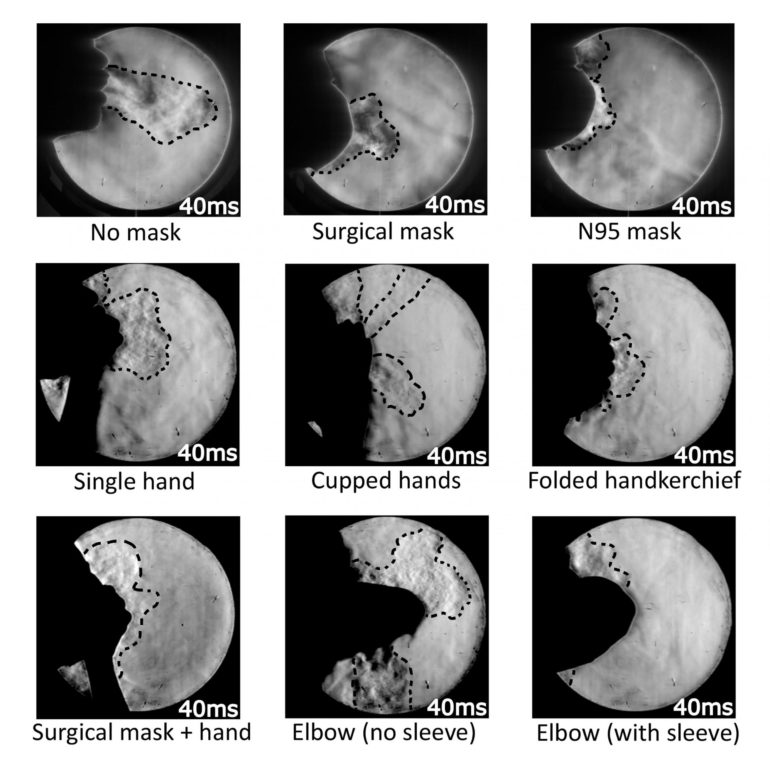Months into the COVID-19 pandemic, wearing a mask while out in public has become the recommended practice. However, many still question the effectiveness of this.
To allay these doubts, Padmanabha Prasanna Simha, from the Indian Space Research Organisation, and Prasanna Simha Mohan Rao, from the Sri Jayadeva Institute of Cardiovascular Sciences and Research, experimentally visualized the flow fields of coughs under various common mouth covering scenarios. They present their findings in the journal Physics of Fluids.
“If a person can reduce the extent of how much they contaminate the environment by mitigating the spread, it’s a far better situation for other healthy individuals who may enter places that have such contaminated areas,” Simha said.
Density and temperature are intricately related, and coughs tend to be warmer than their surrounding area. Tapping into this connection, Simha and Rao utilized a technique called schlieren imaging, which visualizes changes in density, to capture pictures of voluntary coughs from five test subjects. By tracking the motion of a cough over successive images, the team estimated velocity and spread of the expelled droplets.
Unsurprisingly, they found N95 masks to be the most effective at reducing the horizontal spread of a cough. The N95 masks reduced a cough’s initial velocity by up to a factor of 10 and limit its spread to between 0.1 and 0.25 meters.
An uncovered cough, in contrast, can travel up to 3 meters, but even a simple disposable mask can bring this all the way down to 0.5 meters.
“Even if a…



